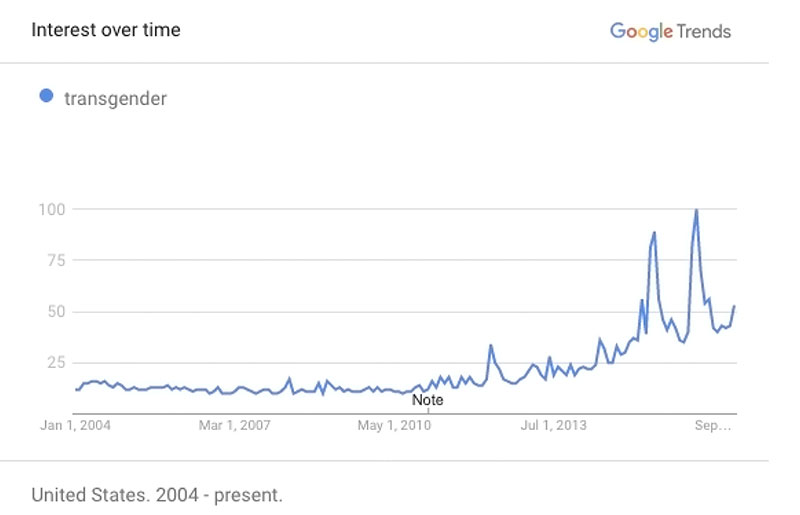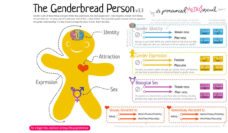The American Public Health Association (APHA) first came out with a declaration about the “Need for Acknowledging Transgendered Individuals within Research and Clinical Practice” in 1999. It urged researchers and health care professionals to recognize the fluidity of gender norms, show sensitivity by using the gender term with which their client identifies, and to “be aware of the distinct health care needs of transgendered individuals.” Yet the 2015 Transgender Survey Report suggests that many transgender individuals continue to experience rampant mistreatment, discrimination, and ignorance from their health care providers.
The proportion of people identifying as transgender within the U.S. population is estimated at 390 per 100,000—or almost 1 million adults. It is predicted that this number will grow as younger generations age and embrace the trends of increased visibility, awareness, and acceptance in society as a whole.
Researchers Meerwijk and Sevelius conducted a Google Trends search of the term “transgender” and found a notable increase in public interest in the United States since 2011 (recreated below from year 2004).

Google Trends search for “transgender” in the United States from 2004 to present. The x-axis measures popularity of the term as a percentage, with a value of 100 representing peak popularity.
Still, one-third of transgender adults surveyed by the National Center for Transgender Equality reported that “at least one negative experience with a doctor or other health care provider” related to their gender identity was a significant hindrance to accessing future health care. These experiences included “having to teach their provider about transgender people in order to receive appropriate care (24%), being asked invasive or unnecessary questions about being transgender not related to the reason for the visit (15%), or being refused transition-related health care (8%).”
Many patients do not reveal their gender identity to their health care providers for fear of harassment.
Many patients do not reveal their gender identity to their health care providers for fear of harassment. Only 6% felt that their provider knew “almost everything” or “most things” about transgender people. Over half of survey participants were denied insurance coverage for transition-related surgeries and a quarter were denied coverage for hormonal treatments.
These barriers, compounded by discrimination, victimization, and harassment from individuals’ families, schools, and the general population, may further threaten the mental health of the transgender population. According to the survey, 39% experienced serious psychological distress in the month prior to the survey as compared with 5% in the general population. A staggering 40% attempted suicide in their lifetime as compared to 4.6% in the general population.
Other disproportionately negative health outcomes include significantly higher rates of substance use, poverty, HIV, sexual or physical abuse, and unemployment. Notably, the Transgender Survey Report also highlighted more serious disparities and negative health outcomes of transgender people of color and/or those who were undocumented or disabled.
Moving forward, effective, accessible health care for a growing transgender population hinges on clinicians that are more sensitive to and knowledgeable of its particular set of health needs.
Feature image: Victoria Pickering, Protect transgender students. February 22, 2017. Rally to protect the rights of transgender students tonight, by the White House, in response to the administration’s withdrawal of the transgender-rights directive. Used under CC BY-NC-ND 2.0/cropped from original.
Graph: Google Trends search for “transgender” in the United States from 2004 to present. The x-axis measures popularity of the term as a percentage, with a value of 100 representing peak popularity.














